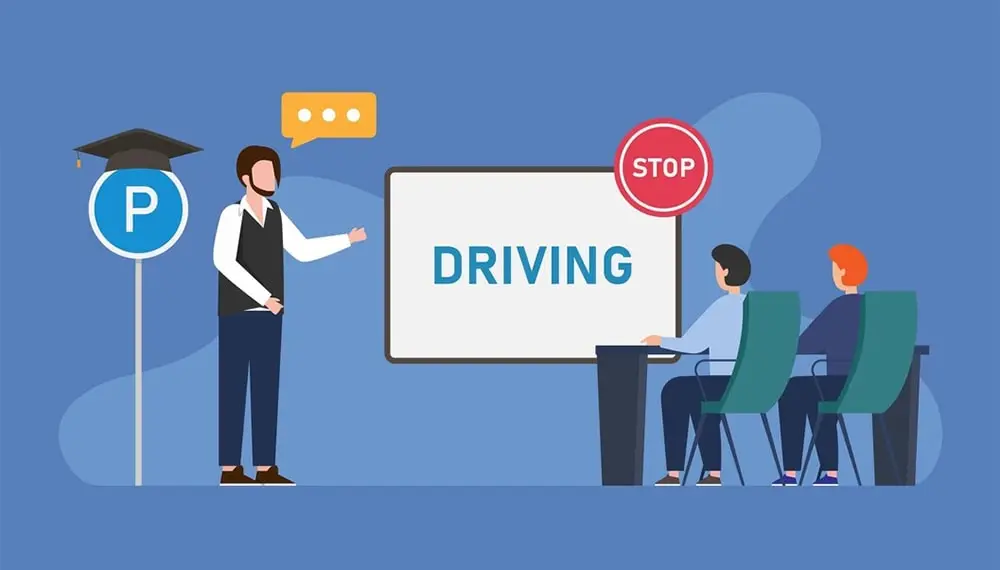Best Training Delivery Methods Across Industries
Rohit Kumar
23 Jul, 2024

In today's fast-paced and ever-evolving corporate landscape, organizations across industries continually seek ways to enhance employee performance, productivity, and engagement. One attractive way to achieve these goals is through effective training programs.
However, the training delivery method is crucial in determining its effectiveness. This article delves into the best training delivery methods across various industries, blending insights from multiple sources to provide a comprehensive guide.
Understanding Training Delivery Methods
Training delivery methods refer to the techniques and approaches used to impart knowledge and skills to learners. These methods vary widely, from traditional classroom-based sessions to modern eLearning platforms. The most suitable methodology for you will depend on several factors, including training objectives, budget, organizational structure, and the specific needs of the learners.
Traditional Classroom Training
Traditional classroom training has long been a cornerstone of employee development. In this method, instructors deliver training sessions in a physical classroom, allowing direct interaction with participants. That approach fosters a collaborative learning environment where employees can engage with the material and each other in real time.
Advantages
-
Facilitates direct interaction between instructors and participants
-
Promotes hands-on learning through activities and group discussions
-
Provides immediate feedback and clarification of doubts
Limitations
-
Requires significant time and resources to organize and conduct sessions
-
Limited scalability, especially for large organizations with dispersed teams
-
May disrupt regular work schedules due to the need for employees to be physically present
Virtual Instructor-Led Training (VILT)
Virtual Instructor-Led Training (VILT) offers a modern twist on traditional classroom training. With VILT, the instructor conducts training sessions remotely, often using video conferencing tools like Zoom. This method retains the interactive nature of classroom training while offering greater flexibility.
Advantages
-
Learners can access training from anywhere, reducing travel and accommodation costs
-
Combines synchronous learning with interactive tools like polls, quizzes, and discussion boards
-
Sessions can be recorded for later review, enhancing retention and understanding
Limitations
-
Requires reliable internet connectivity and compatible devices
-
May lack the personal interaction and immediacy of traditional classroom settings
-
Self-discipline and motivation are needed to stay engaged
On-the-Job Training and Job Shadowing
On-the-job training involves learning by doing, where employees acquire new skills and knowledge through hands-on experience in their actual work environment. This method is particularly effective for tasks best learned through practical application, such as operating machinery or software systems.
Advantages
-
Provides real-world context and relevance to training content
-
Facilitates immediate application of newly acquired skills in the workplace
-
Fosters a supportive learning environment with guidance from experienced colleagues
Limitations
-
It may be time-consuming and disruptive to regular work activities
-
Requires availability of experienced trainers or mentors to provide adequate support
-
Inconsistencies in training quality and content delivery across different departments
eLearning
With technological advancements, eLearning has become a popular alternative to traditional training methods. eLearning platforms deliver training content digitally, allowing employees to access materials conveniently from anywhere with an internet connection.
Advantages
-
It offers flexibility and accessibility, enabling learners to study at their own pace
-
Cost-effective, eliminating the need for travel and venue expenses
-
Includes multimedia elements like videos, interactive modules, and quizzes to engage learners
Limitations
-
Requires reliable internet connectivity and access to compatible devices
-
May lack personal interaction and immediate feedback
-
Requires self-discipline and motivation to complete training modules
Blended Learning
Blended learning combines traditional classroom training and eLearning elements to create a hybrid approach that offers the best of both worlds. In blended learning models, employees participate in a combination of in-person sessions and online modules, allowing for greater flexibility and customization.
Advantages
-
Combines the pros of face-to-face interaction with the flexibility of online learning
-
Adaptable to different learning styles and preferences
-
Maximizes training efficiency by leveraging technology while maintaining opportunities for hands-on practice
Limitations
-
It requires prudent planning and coordination to ensure seamless integration of different learning components
-
May pose challenges in terms of technology compatibility and accessibility for all employees
-
Ongoing evaluation and adjustment are needed to optimize the balance between online and offline learning activities
Industry-Specific Training Delivery Methods
Different industries have unique training needs, and the delivery methods should reflect these requirements. Here are some industry-specific considerations for selecting the best training delivery methods.
Healthcare Industry
In the healthcare industry, training is critical to ensure that professionals stay updated with the trending practices, technologies, and regulations. The high-stakes nature of healthcare makes effective training delivery methods essential.
Recommended Methods
-
Simulation Training: Uses realistic scenarios to train medical professionals in a controlled environment. For example, surgical simulations allow practitioners to practice procedures without patient risk.
-
Blended Learning: Combines online modules for theoretical knowledge with hands-on practice in clinical settings. This approach ensures that healthcare workers are well-prepared for real-world challenges.
-
Virtual Reality (VR) Training: This type of training immerses learners in 3D environments, allowing them to practice complex procedures and enhance their skills through experiential learning.
Technology Industry
The tech sector is marked by rapid innovation and continuous learning. Training delivery methods in this industry must be agile and up-to-date with the latest trends.
Recommended Methods
-
eLearning: Offers tech professionals the flexibility to learn new programming languages, tools, and frameworks at their own pace. Interactive modules and coding exercises enhance retention and practical application.
-
On-the-Job Training: This training allows employees to work on real projects under the guidance of experienced mentors, facilitating the immediate application of new skills.
-
Gamification: Incorporates game mechanics into training to make learning more engaging and motivating. For example, coding challenges and hackathons can foster a competitive yet collaborative learning environment.
Manufacturing Industry
Practical skills and safety are paramount in the manufacturing sector. Training delivery methods must focus on hands-on experience and compliance with safety regulations.
Recommended Methods
-
On-the-Job Training: Provides new hires with practical experience on the production floor, ensuring they understand the equipment and processes.
-
Simulation Training: This method uses virtual simulations to train employees to operate machinery and handle emergencies. It enhances safety and preparedness without the risks associated with real-life practice.
-
Blended Learning: Combines classroom sessions on safety protocols with hands-on practice, reinforcing the importance of adhering to safety standards.
Financial Services Industry
The financial services industry demands continuous learning to comply with regulations and adapt to market changes. Effective training delivery methods in this sector must balance regulatory requirements with practical application.
Recommended Methods
-
eLearning: Delivers up-to-date content on regulatory changes, financial products, and market trends. Interactive modules and case studies help employees apply their knowledge to real-world scenarios.
-
Virtual Instructor-Led Training (VILT): Facilitates discussions on complex financial topics and allows for real-time interaction with subject matter experts.
-
Mentoring and Coaching: Provides personalized guidance to employees, helping them develop the skills needed for career advancement and compliance with industry standards.
Retail Industry
In retail, employee training focuses on customer service, product knowledge, and sales techniques. Training delivery methods must be accessible and practical to accommodate high employee turnover and varying skill levels.
Recommended Methods
-
On-the-Job Training: Allows new employees to learn customer service skills and sales techniques through fundamental customer interactions.
-
Microlearning: Delivers short, focused training sessions that employees can complete during breaks or downtime. Topics include product updates, sales tips, and best customer service practices.
-
Blended Learning: Combines in-store training with online modules, providing a comprehensive approach to developing soft and technical skills.
Best Practices for Effective Training Delivery
Regardless of the industry, there are several best practices that organizations can follow to ensure adequate training delivery:
Clear Communication
Effective training delivery starts with clear communication of training goals and objectives. Teams should understand the purpose and significance of their training and the expected outcomes. That fosters a sense of direction and investment in the training process.
Continuous Support and Follow-Up
Training in modern times is not a one-time event but an ongoing process. Ongoing support and follow-up ensure employees retain and apply what they have learned. Follow-up sessions, coaching, and mentoring programs can reinforce learning and address employees' challenges.
Tailoring Training to Individual Needs
Recognizing that every learner is unique, organizations should adapt their training approaches to cater to different learning styles and preferences. That can involve using various instructional methods, such as visual, auditory, and kinesthetic techniques, to ensure the training resonates with all participants.
Leveraging Technology and Multimedia Tools
Incorporating technology and multimedia tools can significantly enhance the learning experience. Interactive modules, simulations, and multimedia content can make training more engaging and effective. Learning management systems (LMS) can also help track progress and provide valuable insights into training effectiveness.
Aligning Training with Organizational Goals
To be impactful, training must align with the organization's broader strategic objectives. By designing training programs to support these goals, organizations can ensure that their training efforts contribute directly to business success. This alignment nurtures a culture of continuous learning and growth within the workforce.
Effective training delivery methods enhance employee performance and drive organizational success. Companies can create engaging and impactful training programs by understanding the needs of different sectors and implementing best practices. Whether through traditional classroom training, eLearning, on-the-job training, or blended learning, the right approach can unlock employees' full potential and lead to sustained growth and innovation.
At Core Competency, we offer a comprehensive range of corporate training products, solutions, and consulting services tailored to meet organizations' diverse needs. Our expertise includes developing customized Learning Management Systems (LMS), providing remote proctoring for online assessments, creating interactive training materials, and much more. Discover how we can transform your corporate training and development programs.




